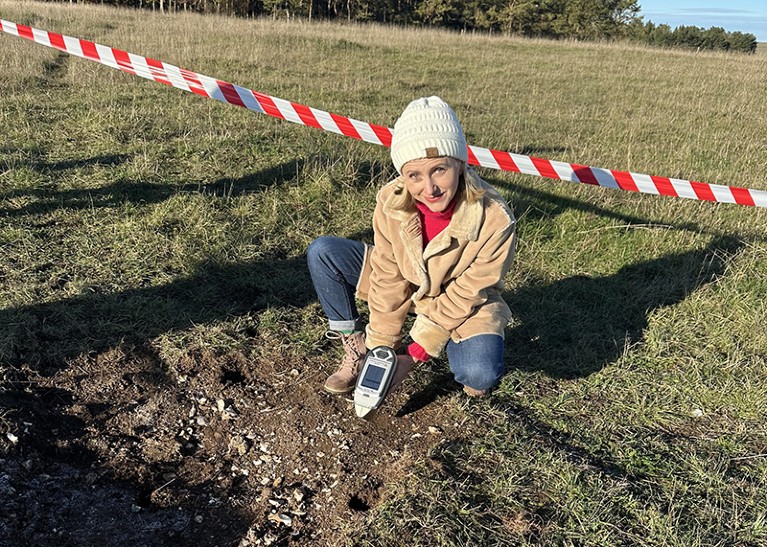
Olena Melnyk at the Salisbury Plain military training area, UK, testing a soil-sampling protocol for use in bomb craters.Credit: Mark Horton
As head of the International Projects Division at Sumy National Agrarian University (SNAU) in Ukraine, Olena Melnyk often strongly encouraged researchers to keep up with the latest developments by building international networks. Little did she know that this skill would help her to save her family after the Russian invasion of Ukraine in February 2022.
Melnyk fled Sumy on 8 March 2022 and eventually joined the Swiss Federal Institute of Technology (ETH) in Zurich, Switzerland, as a senior researcher at the Climate Policy Lab — a post she held until earlier this year. She continues her work for SNAU remotely, which includes undertaking international projects and serving as a part-time associate professor of ecology. In Switzerland, she’s surrounded by other Ukrainian expatriates and refugees who are also giving back to their home country through their research. As an honorary professor at the Royal Agricultural University (RAU) in Cirencester, UK, she’s coordinating a project to analyse soil contamination resulting from Russian bombing and to develop soil-remediation strategies for farmland.
Melnyk spoke to Nature about her journey from Sumy to Zurich, her experience of switching her research focus and the importance of project management in research.
What was it like in the first few weeks of the war, and how did you get out?
I was with my family in Sumy, a city on the banks of the Psel River in northeastern Ukraine. At that time, Russian troops surrounded Sumy but had not yet occupied it. I mainly worked at night because during the daytime, we watched the news to keep informed. We couldn’t leave our house because it was too dangerous. There was limited food — the shelves in the supermarkets were empty. To help the university students during this time, we had a rotating schedule, with staff taking turns to provide food to international and local students who couldn’t go home.
I knew that the situation could get worse at any time, so we had our backpacks and suitcases packed. Still, we considered staying in Ukraine. But the night of 7 March, there was a terrible missile attack not far from my house, and 24 people were killed. That’s when I decided to flee Ukraine — I had to make sure my son and daughter were safe.
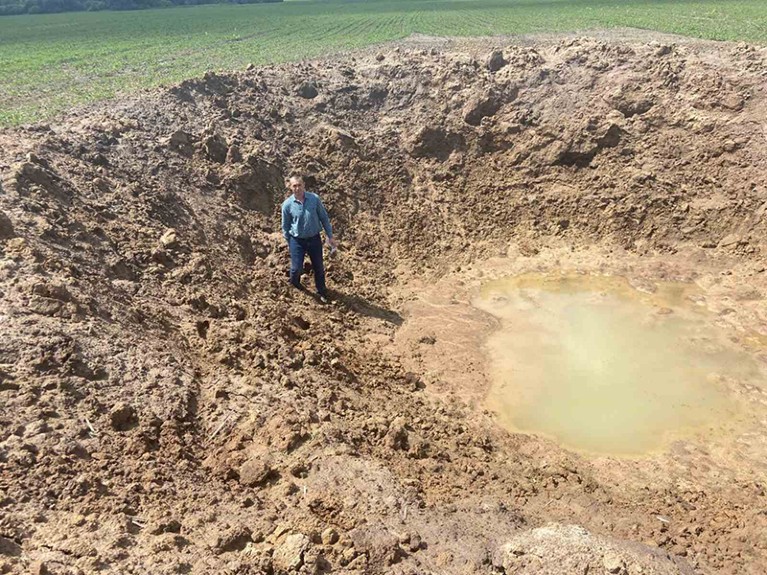
Olena Melnyk’s colleague, Igor Kovalenko, an ecologist at Sumy National Agrarian University in Ukraine, takes soil samples from a bomb crater near Sumy in June 2023.Credit: Volodymyr Ivchenko
I was quite lucky, in that most of the international partners with whom we had projects contacted me, and offered to host me and my family. I was amazed at how kind people were. A friend with connections to the Turkish embassy arranged for our escape from Sumy, and some of my collaborators from the Ondokuz Mayis University in Samsun, Turkey, hosted us.
How did you find the position in Zurich?
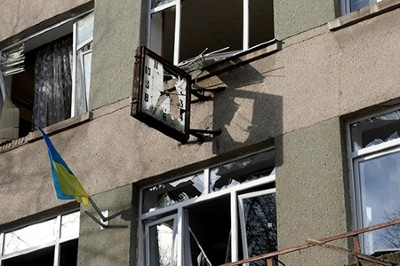
How we pivoted to studying Ukrainian researchers during the war
Once I fled Ukraine, I updated my CV, wrote a covering letter and sent it to multiple universities abroad. The first reply came from a professor at the ETH. He liked my CV but our research interests weren’t a match. He connected me with the deputy head of the Institute of Environmental Decisions at the ETH, Anthony Patt, who offered me a senior researcher position in the Climate Policy Lab.
I relocated from Turkey to Zurich with my family at the end of March 2022. At the ETH, I led a project on climate-compliant solutions for the post-war restoration of Ukrainian communities. For example, we showed that through a combination of renewable energy generation, using electricity for heat and transport, and innovative energy-storage technologies, Ukraine can meet its energy demands without relying on fossil fuels and nuclear power1.
How have your roles at SNAU evolved since you left Ukraine?
In my international-projects role at SNAU, I coordinate research projects across multiple departments, manage partnerships with international institutions and apply for international grants. I still lead this team remotely.
In my role as an ecology professor, I continued to remotely teach students and supervise master’s projects in the SNAU Ecology and Botany Department until mid-2023, when I stepped down from regular teaching duties. However, I occasionally give open lectures and lead workshops for students at SNAU.
Adjusting to my new normal was a big challenge. Being outside my home country, there were a lot of uncertainties and, at the same time, my colleagues in Ukraine were enduring daily physical attacks and power shutdowns.
I try to set flexible deadlines and am in constant contact with the team members. I engage with them in person whenever possible; for instance, I invited them to join a round-table discussion in Bern. I understand exactly how hard it is to live in Ukraine right now. They need this break, some fresh air and to see that people around the world support them.
What prompted you to study the war’s impact on Ukraine’s soil?
In early 2022, many farmers who work closely with SNAU raised concerns about the soil quality. They told us that there were so many bomb craters, trenches and bombturbations2 — a term coined by US scientists Joseph Hupy and Randall Schaetzl to describe war’s impact on soil — that they weren’t sure they could produce food. They told me that they didn’t know what might be found in Ukraine’s soil, and that it might be too toxic. So, I decided to look at soil samples to assess heavy-metal contamination and to develop a research project in collaboration with the RAU.
How did you collect and analyse the soil samples?
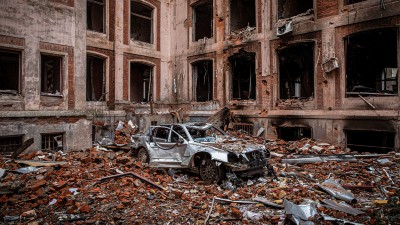
The grassroots organizations continuing the fight for Ukrainian science
Researchers from the SNAU agricultural faculty coordinated soil sampling and analysis. The samples were collected from three regions in Ukraine, namely Sumy, Kharkiv and Chernihiv, by farmers cooperating with local emergency services. Then, the samples were either shipped to Bern or delivered there by colleagues from SNAU. We held a round-table discussion at Bern University of Applied Sciences with specialists from the Swiss Soil Competence Center, RAU and SNAU to finalize the sampling protocol. We also shared our soil samples with different institutions to test them using various methodologies.
Next, the team at SNAU took more than 300 soil samples and analysed 28 bomb craters using 9 spectroscopic technologies, such as X-ray fluorescence, Raman spectroscopy and atomic-absorption spectroscopy, either on site or after the samples were sent to laboratories in Ukraine, the United Kingdom or Switzerland. In addition, we launched drones to measure crater volumes and gathered satellite and geospatial data.
What were some of the key findings of the project?
Unfortunately, a few sites in eastern and southern Ukraine are highly polluted, with heavy-metal concentrations up to 20 times higher than the legal limits. In other regions, we found some changes in the soil structure and slightly elevated levels of heavy metals such as titanium, antimony, lead and cadmium. However, the soil contamination isn’t as bad as we initially predicted; at most sites, we found that the levels of heavy metals were within the legal limits.
I want our work to have a real-life impact. I want to make the data usable by our government and farmers. We’re embedding our data in a digital map, with all the information integrated with a single click.
For soil restoration, we plan to divide sites into three categories: regions where agriculture can continue without any further intervention; regions where appropriate remediation measures should be taken; and lands that should be withdrawn entirely from agriculture. These areas could instead be repurposed for biodiversity, restoration or to produce corn (maize), wheat and rye as primary sources of biogas.
What advice would you give to scientists and students facing war or other disasters?
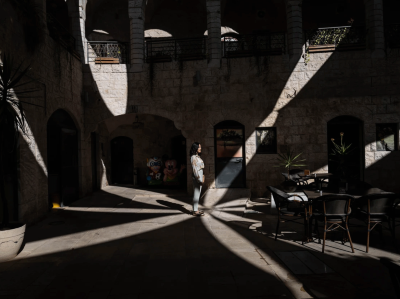
The Israel–Hamas conflict one year on: researcher resilience in the face of war
First and foremost, even if it’s a terrible situation, don’t give up. Always believe in a better future. Make sure you are building strong communication skills and networks by attending conferences — you never know who your next collaborator could be. Expand your expertise beyond research, get experience in project management, learn how to make your research attractive and find funding. Try to learn new languages and gain as much international experience as possible. Lastly, keep your mind open to fresh opportunities.






